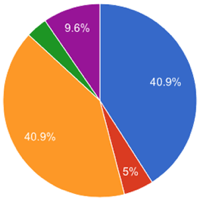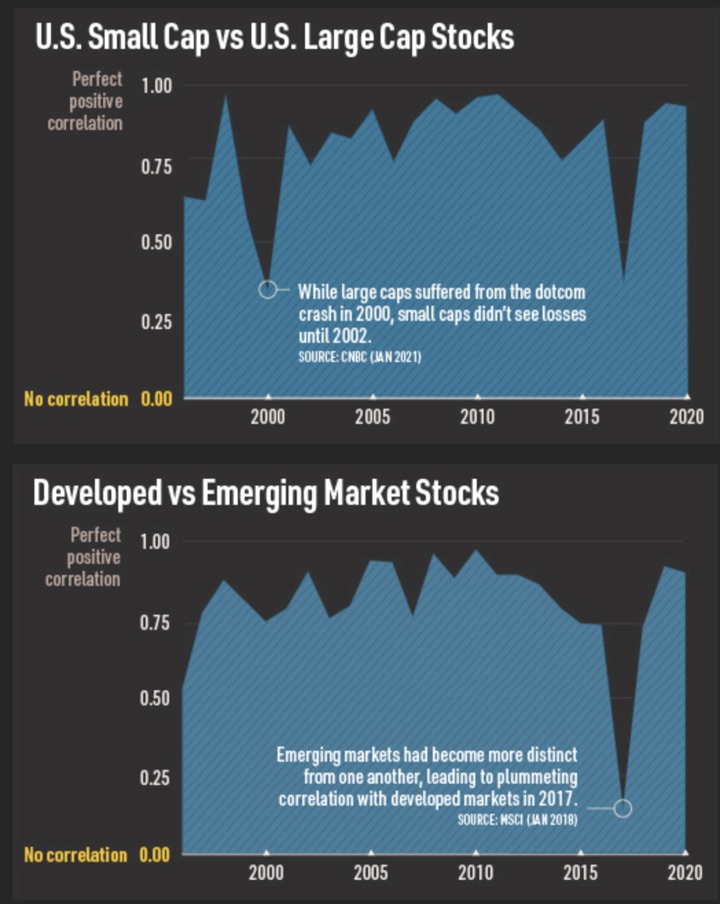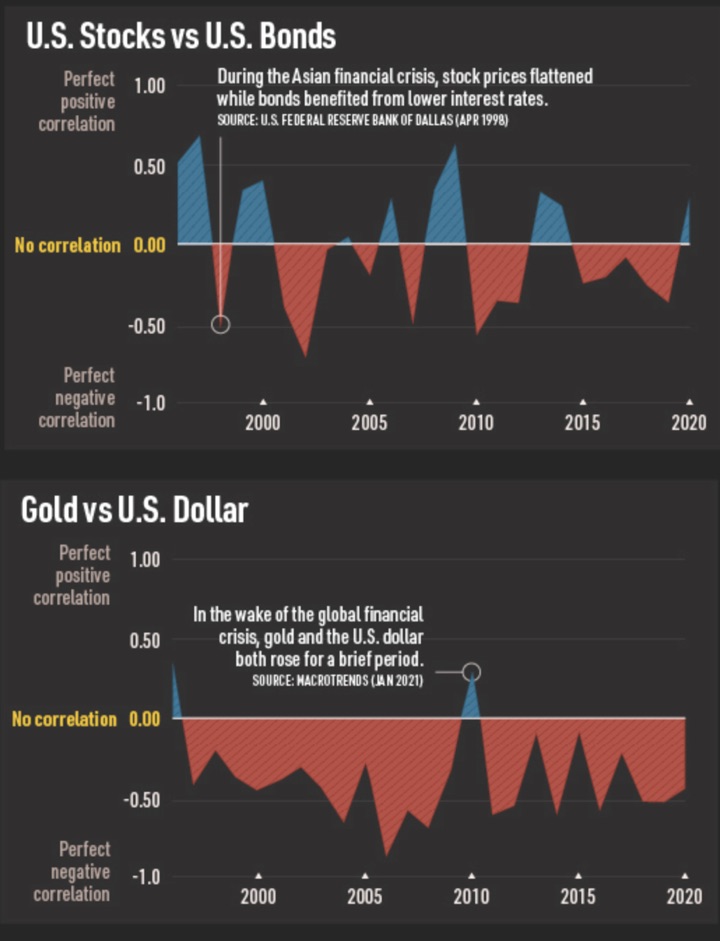 When talking about constructing an investment portfolio, you’ll often hear about diversification and buying low-correlation or non-correlated assets.
When talking about constructing an investment portfolio, you’ll often hear about diversification and buying low-correlation or non-correlated assets.
- A positive correlation means that the assets tended to move in the same direction. A value of 1 is perfect positive correlation.
- A negative correlation means that they tended to move in opposite directions. A value of -1 is perfect negative correlation.
- A zero correlation means that they had no relationship.
Visual Capitalist has a nice infographic of a few asset class correlation combinations from the last 25 Years (1996-2020). Specifically, they charted the 1-year correlation based on monthly returns.
We see that US Large Cap and US Small Cap stocks are highly correlated historically, as are Developed and Emerging Market stocks. Even though each basket may contain completely different businesses doing different things and even located in different parts of the world, they still contain businesses and thus tend to move together in the same direction. Of course, a Nobel Prize-winning discovery was that as long as assets aren’t perfectly correlated (a value of 1), you still get some amount of diversification benefit from owning different asset classes. For example, owning both US and International stocks still helps diversify your portfolio even if they tend to go up or down together.

Meanwhile, the relationship between US stocks and US bonds have a low correlation. Although it’s not always negative, it has been negative 14 out of the last 25 years. As stocks and bonds don’t reliably move together, this offers a more impactful diversification benefit to your portfolio. In addition, investment-grade bonds tend not to move as much in general and thus can serve as a stable ballast to your portfolio. (Note that the last chart is Gold vs. US dollar, not US stocks.)

Here is another post on asset class correlations with data from Morningstar.
 The Best Credit Card Bonus Offers – 2025
The Best Credit Card Bonus Offers – 2025 Big List of Free Stocks from Brokerage Apps
Big List of Free Stocks from Brokerage Apps Best Interest Rates on Cash - 2025
Best Interest Rates on Cash - 2025 Free Credit Scores x 3 + Free Credit Monitoring
Free Credit Scores x 3 + Free Credit Monitoring Best No Fee 0% APR Balance Transfer Offers
Best No Fee 0% APR Balance Transfer Offers Little-Known Cellular Data Plans That Can Save Big Money
Little-Known Cellular Data Plans That Can Save Big Money How To Haggle Your Cable or Direct TV Bill
How To Haggle Your Cable or Direct TV Bill Big List of Free Consumer Data Reports (Credit, Rent, Work)
Big List of Free Consumer Data Reports (Credit, Rent, Work)
Speak Your Mind